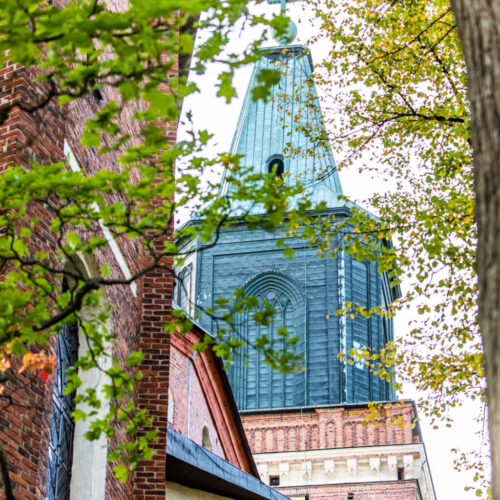
National and local discourses of digitalization in an Evangelical Lutheran parish in Finland during the pandemic
Recovira
24/08/2023Practices during the pandemic | English | Finland
A summary of my Master’s thesis conducted as part of ReCoViRa in Finland
Ossian Klingstedt, Åbo Akademi University
The aim of my thesis was to analyze the Evangelical Lutheran Church of Finland’s (ELCF) discourses on digital media during the COVID-19 pandemic. By applying the theoretical perspectives of mediatization, vicarious religion, and religious-social shaping of technology, I identified the specific discursive formations that were fundamental to the ELCF’s way of understanding and talking about digital media. In this light, I analyzed the ELCF’s adoption of digital tools during the spring of 2020 with a focus on its communication on both a national and a local level. The data analyzed consisted of a set of publications and information notices published by the ELCF both before and during the spring of 2020 (national level) as well as a group-interview conducted in 2023 with employees of the Swedish-speaking parish in Turku, Åbo svenska församling (local level).
My thesis shows how, at the national level, the ELCF’s communication regarding digital media was governed by specific discursive formations that depicted the church as a public utility and essential part of Finnish society – a “folk church” – while internally reproducing a notion of the church as being in a certain kind of existential crisis, due to e.g. membership loss and general disinterest in its activities and provisions. The ELCF drew on these discursive formations when justifying its use of digital media, arguing that, in a media-saturated society, it is necessary to extend activities and services to digital environments. In this, the ELCF’s official discourse includes clear elements of technological determinism, as the church sees adaptation to societal processes of digitalization as inevitable.
The COVID-19 pandemic accentuated this discourse of forced adaptation once it became clear for the ELCF that certain technical solutions would be a necessity for it to be able to have an active role in society during the crisis. At the beginning of the pandemic, the central task of the ELCF became to maintain its services, but in a way that prioritized safety and health. Thus, technological solutions, such as streamed church services and pastoral care through video calls, came into the picture, and were put into use with the aim of maintaining the ELCF’s self-identified mission as a “folk church”: even in exceptional circumstances, the argument went, the church must be available for those who need it. At the local level, it was felt that digital media provide good opportunities for expanding the church’s communicative reach and for participation even in restricting conditions, as attendance numbers in online church services surprisingly exceeded those of in-person services before the pandemic. The administration of the “virtual church”, however, also greatly increased the workload for specific employees instead of functioning as a well-integrated supplement to established offline practices. Furthermore, some ritual acts, such as the Eucharist in particular, were perceived as impossible to fully realize through current digital mediums. Local parish employees therefore made a clear qualitative distinction between the “online” and the “offline” church, although further integration of digital elements into everyday parish activities and services is to be expected in the near future.
Image credit - Heikki Raisanen: Turku Cathedral Bell Tower
